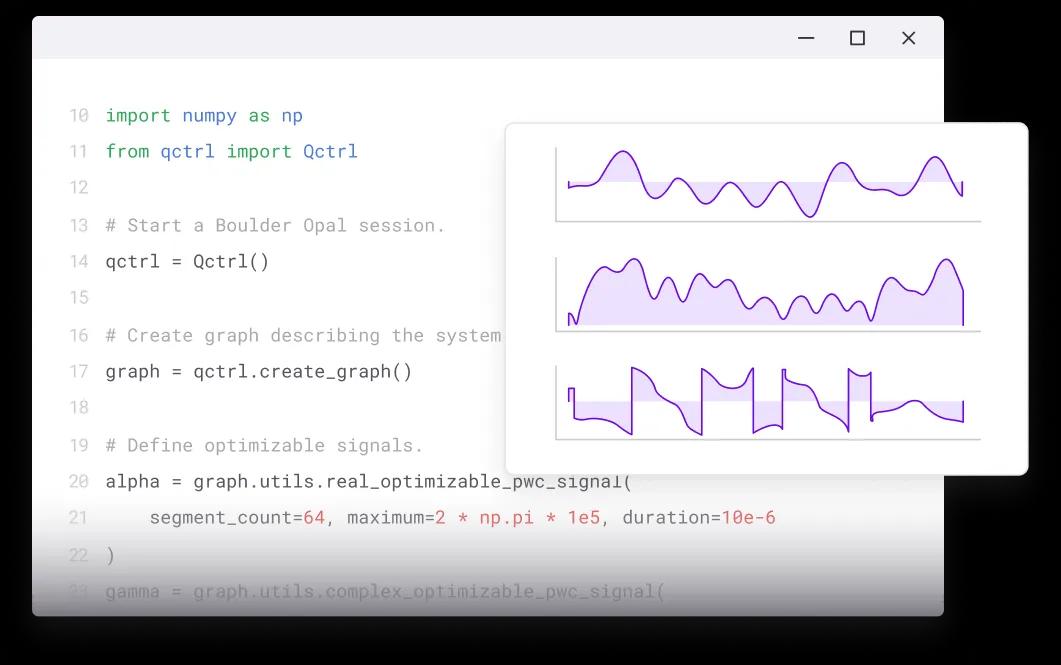Boulder Opal
Quantum control infrastructure software for R&D professionals building the future

Optimize your quantum hardware
Use our Python package to harness the power of quantum control in your own research, or integrate directly into hardware.

Start using Boulder Opal
Start using Boulder Opal to harness the power of quantum control in your own research, or integrate directly into hardware.
Adopt Boulder Opal
Discover how Boulder Opal's control design and automation software enables you to build superior quantum computers and quantum sensors
Set up Boulder Opal
Find all of the resources you need to install and run Boulder Opal and immediately start solving your toughest problems
Design
Bring your unique quantum hardware to market faster with Boulder Opal's control design capabilities
Automate
Boulder Opal's intelligent hardware and control automation
Apply
Discover how Boulder Opal can help you solve the toughest challenges across hardware systems with complete code-based solutions
Integrate
Connect Boulder Opal to leading hardware and software packages in the quantum ecosystem

New to Boulder Opal?
Get access to everything you need to automate and optimize quantum hardware performance at scale.
Need support?
Questions? Problems? Need more info? Contact Q-CTRL Support for assistance!
Learning center
Discover the background, history, and context of Q-CTRL's work in quantum computing and quantum sensing.
Research
Discover pioneering original research from the team at Q-CTRL.